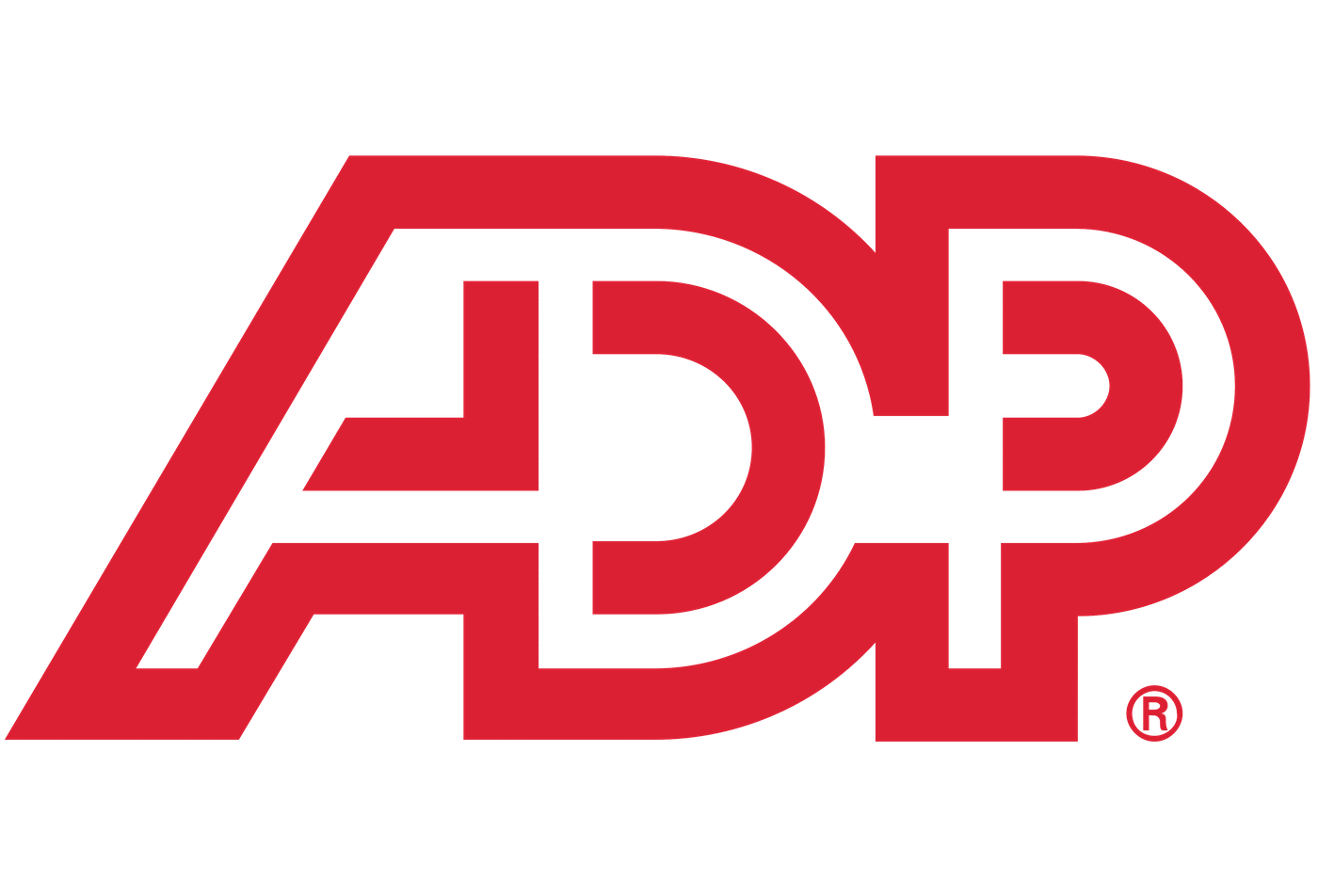Table of contents
ToggleShare this article
What is a PEO?
PEOs, or professional employer organizations, partner with companies to provide various human resources (HR) services, including payroll, benefits administration, risk management, workers’ compensation, tax filing, and compliance services. One of the hallmarks of partnering with a PEO is its co-employment relationship, meaning the PEO and its client share employees and employment liability.
Typically, PEOs target small and medium-sized businesses (SMBs) with limited bandwidth for HR needs. PEOs run in the background by taking over administrative functions so their clients can focus on running day-to-day operations. Their goal is to create strategic, long-term partnerships with companies that have small growth goals or can’t rationalize maintaining in-house HR staff.
Our top picks for the best PEO services are:
- ADP TotalSource is the best overall PEO.
- Paychex PEO is best for customizable services.
- Rippling PEO is best for robust software features.
- Insperity is best for employee training and engagement.
- Justworks is best for small businesses.
Featured partnersFeatured Partners
Need Help? Talk to an HR Software Advisor
Our picks for the best PEO services
- Sep. 12, 2024: Updated all mentions from Rippling Unity to Rippling Platform to reflect its rebranding.
We picked our choices with you in mind.
First, we evaluated 15 PEO services based on current options, demos, free trials, and the reviews of customers like you. We then narrowed our selections to the services that best addressed your top-of-mind concerns, such as cost, service coverage, and level of customer care. We reviewed the following vendors during our research:
- ADP TotalSource
- Papaya Global
- Paychex PEO
- Justworks
- AlphaStaff
- INFINITI HR
- TriNet
- Insperity
- Deel
- Rippling PEO
- Resourcing Edge
- Oyster HR
- Remote
- CoAdvantage
- Engage
As the market changes, we reevaluate our choices so you always receive the best insight for your purchasing decision.
ADP TotalSource: Best overall PEO
Pros
Cons
- Non-transparent pricing.
- Time tracking, scheduling, and recruitment services are add-on features.
- Users report slow or unhelpful customer service.
- May be too feature-rich for businesses with fewer than 50 employees.
Because of ADP’s long-running history in payroll processing and HR, its PEO service, TotalSource, is the most comprehensive and scalable option on our shortlist. In addition to managing payroll, benefits administration, retirement contributions, workers’ compensation, and compliance, TotalSource also offers:
- An all-in-one human resources information system (HRIS) for employee self-service, electronic personnel data storage, and workforce analytics.
- A dedicated human resources business partner.
- Access to full-time recruiters and background check services.
- Compliance database and employee handbook creation.
- Consultation services for mergers, acquisitions, workforce optimization, performance management, exit surveys, compliance, and succession planning.
It’s worth acknowledging that TotalSource comes with the advantages and disadvantages of a big-name PEO and HR software vendor.
As a benefit, TotalSource is highly versatile, allowing you to customize the level of coverage you need. You can stay in the ADP product family even if you require a different level of coverage, like human resources outsourcing (HRO) or employer of record (EOR) services.
That said, the sheer size of ADP means customer service and HR representatives handle multiple clients, which can result in long wait times, repetitive processes, and slow turnaround. Despite this, ADP has the expertise to handle almost all HR situations because of its long-standing presence.
ADP offers several products and services, so it’s a strong alternative to many HR and payroll solutions on the market:
Benchmarking and analytics
ADP TotalSource gives you access to ADP DataCloud, an analytics platform that includes narrative-based data analysis and benchmarking. This allows small businesses to identify areas for optimization, including productivity, efficiency, and labor costs.
In particular, anonymized benchmarking data from ADP’s client base allows you to compare your HR metrics, like turnover, overtime, absence, and compensation rates, with others in your industry. If your rates are higher than average, you can take measures to understand why and address underlying issues.
Full-scale, flexible payroll
ADP started in payroll, so its offerings are particularly robust in this area. TotalSource includes many competitive capabilities like earned wage access capabilities, quick processing times, and flexible payroll schedules. If your employees prefer receiving paper checks, ADP also includes checking printing, signing, and stuffing services in its base PEO plan.
What’s more, you aren’t limited to paying employees within the United States. As you expand, you can work with ADP’s global partners for EOR services through its platform, whether you are hiring employees or contractors.
ADP TotalSource does not disclose its pricing details upfront, so you will need to contact ADP directly to get a cost estimate that’s tailored to your business’s needs.
However, sources indicate it uses a per-employee, per-month pricing model. Pricing will depend on your company size and the modules you choose.
You should also expect to pay a one-time implementation fee that is about 15–25% of your annual costs for the software.
Base plan
ADP states the following features and services are included in its base TotalSource plan:
- Support from HR experts.
- ADP Workforce Now.
- ADP DataCloud (Analytics and Enhanced Insights).
- Mobile app.
- Learning management system.
- Reporting.
- Risk management.
- Document management.
- Paid time off (PTO) and leave management.
- Workers’ compensation insurance and claims management.
- Unemployment insurance claims management.
- Payroll.
- Benefits administration.
- Global EOR platform.
Add-ons
- Recruitment management.
- Performance management.
- Compensation management.
- Employee engagement and leadership training.
- Access to third-party integrations and open API.
- Early wage access.
- Time tracking.
- Scheduling.
- Custom general ledger.
- Student loan repayment program.
As one of the longest-running PEOs, ADP has the most robust offerings regarding compliance, benefits, software capabilities, and growth options. If your company is particularly worried about HR support in a niche industry, expects to grow or change rapidly, or wants the reliability of a mainstay PEO, then TotalSource may be your best bet.
Paychex PEO: Best for customizable services
Pros
- Assigned a dedicated HR professional.
- Business insurance options include general liability, umbrella, cyber liability, and commercial liability.
- Review and finalize payroll via mobile app.
- Completely hands-free payroll with its Voice Assist feature.
Cons
- Minimum requirement of five employees.
- PEO customer service is limited to Monday–Friday, 8:00 a.m.–8:00 p.m. ET.
- Features and services are limited to the U.S. and northern Europe.
Paychex PEO is another long-standing PEO with many of the same features as ADP TotalSource. However, where ADP has expanded outward to give its clients access to global capabilities, Paychex supports clients in only the U.S. and Northern Europe. So, its PEO customization and service levels are slightly more flexible than those of ADP.
At a minimum, new clients must sign a client service agreement with Paychex PEO to establish the co-employment relationship and support their HR administration, payroll, benefits, and risk management. Outside of this, you can choose which HR and business-related functions Paychex will cover and to what degree. These capabilities include:
- Employee screening and background check services.
- Recruiting and applicant tracking.
- Employee retention tax credit (ERTC).
- Work opportunity tax credit (WOTC).
- Research and development (R&D) tax credit.
- Affordable Care Act management and reporting.
- Retirement planning services.
- Business insurance packages.
- HR software features.
Its software and other outsourced HR services make Paychex PEO appealing compared to smaller PEOs that only offer HR consulting, payroll, benefits, and workers’ compensation management.
We should note that Paychex receives similar negative reviews as ADP regarding customer service and unknowledgeable staff because of its vast customer base. But Paychex makes a point to publicly respond and resolve issues, similar to ADP. Nevertheless, be aware that choosing Paychex for its huge feature set may come at a slight cost to response times.
Customized safety programs
Paychex PEO creates a tailored safety program to fit your business’ industry and training needs. Uniquely, Paychex assigns safety experts to review your company’s workplace to understand the challenges you face daily. These experts customize safety manuals for your needs, provide you access to training courses in more than 70 topics, and update you on important safety compliance changes.
If you are in a high-risk industry like construction, manufacturing, or roofing, this level of support can be essential for keeping workplace injuries low and preventing any OSHA investigations for unsafe practices.
Benefits and liability administration
Paychex’s benefits administration is highly customizable, including the following:
- Standard PPO and HMO coverage for health, dental, and vision.
- Health savings accounts (HSAs), flexible savings accounts (FSAs), and health reimbursement arrangements (HRAs).
- Section 125 cafeteria plans.
- Retirement benefits.
- COBRA administration.
Paychex clients also benefit from access to various business insurance coverage options. For project-based companies, this can make it significantly easier to produce certificates of insurance that prove your coverage levels when partnering with contractors or subcontractors.
Learn more about how Paychex PEO partners with Flock for benefits administration:
Paychex PEO does not publicly disclose its pricing, so you will have to contact Paychex directly for a customized quote.
However, the starting price for Essentials, its lowest price tier for its Paychex Flex payroll platform, is $39 per month, plus $5 per employee per month (PEPM). With this, you get access to:
- Payroll processing.
- Employee onboarding.
- Analytics and reports.
- New hire reporting.
Other essential features, like time tracking, scheduling, state unemployment insurance, and general ledger integration, are add-on features. You should also expect an initial cost to establish the PEO co-employment relationship.
Paychex PEO stands out for its extensive service feature list, making it great for businesses that want an à la carte PEO to fill functional HR gaps. This can be especially useful if you’ve already established an HR department but want to switch internal focus to strategic initiatives, like improving employee retention.
In these scenarios, Paychex PEO can serve as your company’s backstop to keep your business ahead of compliance changes and help with complicated HR situations when needed.
Rippling PEO: Best for robust software features
Pros
- PEO, EOR, and self-run payroll options.
- In-software compliance support to detect potential labor law violations.
- IT and finance software options available.
- PEO turn-off feature with no loss of HR software functionality.
Cons
- Not certified by the ESAC or IRS.
- Global payroll support for around 50 countries, which is less than other international payroll competitors.
- Must buy its base Rippling Unity platform to access additional modules like payroll.
Rippling is well-known for its sophisticated HR and IT software modules that streamline data across the employee life cycle. Rippling’s PEO service is the newest in our roundup, starting in November 2020. However, startups and tech-heavy companies with distributed teams and complex labor law compliance requirements will find Rippling a top choice.
This is especially apparent when looking at long-standing PEOs on our list, like ADP TotalSource, Paychex PEO, and Insperity. Despite ADP’s huge software product library and Paychex’s hands-free payroll feature, Rippling’s platform is more streamlined and intuitive.
Rippling’s expertise in IT extends to its HR platform. Users can enter information like employee terminations, PTO, and benefits one time, and it transfers across the platform to inform areas like:
- Payroll processing.
- Benefits deductions and withholding.
- Turnover rates.
- Headcount planning.
- Attendance and absenteeism.
- Onboarding and training management.
- Device and workplace app management.
Note: Rippling is the only PEO in our shortlist that is not a certified PEO, meaning the IRS doesn’t recognize it for its regulatory compliance, tax knowledge, reliability, or financial stability. However, Rippling participates in the National Association of Professional Employer Organizations (NAPEO) and uses compliance tools issued by the Employer Services Assurance Corporation (ESAC).
Modern software
Rippling has a modern layout, with all of its products and modules easily accessible from the left rail menu. Once you access the module you need, the rail minimizes for heightened focus. Employees can add and subtract icons at the top of the menu bar to engage with onboarding or offboarding processes wherever they are on the platform.
Rippling also allows for customized HR automations using Rippling’s visual Workflow Studio and pre-built templates. Neither requires an additional fee nor a Rippling representative to create the automation for you. Combined with its employee self-service features and automated payroll, Rippling can drastically speed up processes, so staff spend less time on repetitive tasks.
Reporting and analytics
Rippling PEO’s software allows you to run customized reports and data charts on both your HR and IT data. With these insights, you can determine how to optimize your processes, detect areas driving up costs, or improve equitable practices in compensation and hiring.
Rippling even lets you get granular with your reporting by adding Excel-like formulas to avoid manually creating spreadsheets.
Rippling’s PEO pricing depends on factors like:
- Number of employees.
- Employee locations.
- Software modules you need.
- Benefit plans you select.
Despite the lack of transparent pricing, third-party estimates indicate that Rippling PEO’s starting cost ranges from $65–89 per employee, per month. Access to its core Rippling Platform also starts at $8 per employee, per month.
Rippling PEO’s software inclusion makes it a great choice if you need technological support for distributed or remote teams but lack the knowledge or internal staff for administration or HR compliance. You can also move off its managed HR model without losing access to the core platform or your personnel data once PEO costs outweigh the cost of managing these processes in-house.
Insperity: Best for employee training and engagement
Pros
- ESAC and IRS certified.
- 90+ physical locations across the U.S. for localized support.
- Full-service customer support available for both customers and employees.
Cons
- Non-transparent pricing.
- Features and services limited to the U.S.
- Applicant tracking features and recruitment services are an extra fee.
Insperity is another popular PEO on the level of ADP TotalSource and Paychex PEO. However, it focuses more on providing personalized support to customers through more than 90 locations across the U.S. It also has three different levels of support to choose from, which it distinguishes based on the size of the business:
- HR outsourcing services for small businesses.
- PEO services for mid-sized businesses.
- Human capital management (HCM) software suite only.
Beyond staple PEO features like payroll, benefits, tax compliance, safety, and HR compliance services, Insperity includes training, performance management, and employee engagement support, which only ADP TotalSource offers in a similar capacity. This makes Insperity a compelling choice if you need professional guidance to create an effective performance review process.
That said, users report that Insperity’s HR software can take time to implement and appears somewhat outdated, especially when compared to Rippling. But, if you prefer a hands-off experience and care less about the technology your PEO uses, it’s worth noting that customers frequently praise Insperity’s personalized customer service.
Training courses
With Insperity, you and your team have access to more than 6,500 online, on-demand learning resources and live training for managers in areas like interviewing, harassment, and diversity, equity, and inclusion (DEI). Employees with specific continuing education requirements in project management or IT can even complete professional development units (PDUs) and continuing professional education (CPE) for some courses.
This is an excellent method to upskill and grow your team through employee development plans without dedicating time to developing these courses yourself.
Employee engagement
Insperity offers employee engagement options that others on our shortlist do not. In particular, Insperity can help administer climate surveys, which can uncover your employees’ perception of your company in areas like culture, values, DEI, employee support, growth opportunities, compensation, and benefits.
In addition, Insperity can help customize a rewards and recognition program, including perks like travel discounts, so that you can support and encourage excellent performance.
You can learn more about Insperity Premier and the way it can improve employee engagement in the video below:
Like many on our list, Insperity does not publicly disclose pricing information; you must call for a customized quote. According to third-party sources and customers, Insperity bases its pricing on a per-employee, per-month basis, with additional costs depending on the number of services and software modules you need.
Insperity offers specialized HR support in several areas, but its attention to employee culture, engagement, and training makes it stand out among its competitors. If you need support on both the administrative and cultural sides of HR, Insperity can be a great partner to help you create a more agile and knowledgeable workforce to adapt to changing customer needs.
Justworks: Best for small businesses
Pros
- Easy-to-use platform to accommodate staff of varying digital literacy.
- International contractor payments available in 30 countries.
- 24/7 customer support via phone, email, chat, Slack, and SMS.
- ESAC and IRS certified.
Cons
- Has preset payroll schedules for hourly, non-exempt employees.
- Software is less feature-rich than others in our roundup.
- Time-tracking is an add-on module.
Justworks is a relatively new PEO, but it stands out for its transparent service offerings, easy-to-access customer support, and straightforward software. This makes it particularly attractive for small businesses that have one or two non-HR employees performing HR tasks, such as workforce management, payroll, and compliance, as a secondary job function.
Justworks allows small businesses to offload administrative work so employees can focus on the money-making aspects of their business. This includes things like:
- End-of-year 1099 and W-2 filings.
- Automatic payroll tax filings.
- Benefits and COBRA administration.
- Harassment prevention and inclusion trainings.
- Integration with QuickBooks and Xero for payroll data transfer to the general ledger.
The Justworks software itself is rather basic — it lacks the more advanced data insights, automations, and customization that characterize competitors like ADP TotalSource or Rippling. However, this lowers the barrier to entry for users with less technical prowess since it is quick to learn.
Affordable pricing
Justworks’ lowest service tier costs $59 per employee, per month, which covers payroll, HR consulting, 24/7 support, vendor and contractor payments, and expense management. Additional costs for workers’ compensation will vary based on your employee headcount and risk level. Despite this, this is significantly cheaper than competitors, starting at $89 per employee, per month.
You also do not have to pay an implementation fee or off-cycle payroll payments, which are additional expenses for platforms like ADP TotalSource.
Vendor and contractor support
Justworks is also one of our top contractor payroll options for its inclusion of vendor and contractor payment management directly in its HRIS, without the need for a separate solution. Justworks will also handle end-of-the-year 1099 fillings and distributions.
If you plan to hire contractors internationally, Justworks also supports payments in 30 countries. With the recent acquisition of the platform Via, this will likely expand to include EOR services so you can support international workers of different employee classifications.
Justworks offers three pricing tiers to choose from:
- Payroll: $50 per month + $8 PEPM.
- PEO Basic: $59 PEPM.
- PEO Plus: $109 PEPM.
June 2024 writer’s note: Justworks recently updated its subscription plans. It now offers a standalone payroll tier. Our editorial team is working to update this section to reflect Justwork’s features, offerings, and cost competitiveness with others in the market.
With two affordable pricing plans, simple software, and dedicated customer support, Justworks is an excellent option if you need white-glove HR assistance without all the extra bells and whistles of larger PEOs. If you don’t anticipate rapid headcount growth, Justworks can help you control costs while keeping pace with employment law changes and providing your employees with benefits you otherwise may not be able to access.
Find your new PEO service provider
PEO services FAQs
Professional employer organizations (PEO) and employers of record (EOR) are two types of third-party entities you can partner with to outsource some or all of your HR functions. The primary difference comes down to the nature of the business relationship you assume with each entity.
A PEO establishes a co-employment relationship where you share employees and employment law liability with the PEO. Working with a PEO requires you to register your business in each location where you hire employees, but it shifts the burden of day-to-day workforce management responsibilities.
In contrast, an EOR — also known as a global employment organization (GEO) — serves as your employees’ legal employer and takes on all employment risk and liability. Most companies work with EORs to hire employees globally without the obstacles that come with establishing legal entities and navigating labor laws in other countries.
PEOs and EORs differ in scope, structure, and flexibility and have various advantages and disadvantages. The best choice for you depends on your business needs, growth plans, and the level of compliance risk you want.
Learn more: PEO vs. EOR: What’s the Difference?
While a PEO establishes a co-employment relationship with you, administrative services organizations (ASOs) and human resources outsourcing (HRO) companies allow you to keep your employees. You remain the employer of record, make all employment decisions, and retain all liability and risk.
ASOs focus on the administrative side of a business. For example, an ASO can help you find a new benefits provider or respond to unemployment claims. Meanwhile, HROs involve outsourcing individual HR functions, like payroll or recruiting.
You may choose an ASO or HRO instead of a PEO to avoid the co-employment relationship, which involves sharing employment risk, workers’ compensation, unemployment rates, and benefits plans. However, if you’re happy with your current benefits and HR metrics, outsourcing specific HR functions with an ASO or HRO might be a better choice.
A certified PEO (CPEO) is a designation PEOs receive from the IRS after passing several financial, background, and reporting requirements. Examples of these requirements include financial statement audits, federal employment tax liability certification, and background checks on individuals making tax payments.
Because CPEOs must demonstrate their ability to cover federal employment taxes to the IRS, they may be a safer alternative to non-certified PEOs. For example, if a non-certified PEO fails to file taxes on time, their clients may be liable for late penalties and interest — not the PEO.
The Employer Services Assurance Corporation (ESAC) is a nonprofit, third-party organization that verifies a PEO’s financial stability, reliability, and compliance with business regulations. CPEOs that are accredited by the ESAC have a proven track record of regulatory compliance and stable financial practices.
In short, yes, you can use a PEO to employ workers wherever you and the PEO are both registered. This is necessary to establish the co-employment relationship.
Some international PEOs can help you establish legal entities in countries where you plan to expand, making this a less tedious process than doing it on your own. However, you may have to partner with several international PEOs to cover the entire geographic distribution of your workforce.
If you want to reduce your employment liability but retain control over your employees, international PEOs may be a better option than an EOR.
Already have legal entities in every country where you have employees? Check out our Global Payroll Software Guide for our favorite tools for handling international employee payments.
To remain competitive, most PEOs customize their pricing for each customer. However, PEOs typically follow one of two pricing schemes: either a per-employee, per-month (PEPM) model or a percentage of monthly payroll costs model.
A PEPM model may be better if your employees are paid on commission, earn overtime, or frequently receive bonuses since these scenarios can cause payroll costs to fluctuate dramatically. In contrast, a payroll percentage model may be better if you employ mostly low-wage workers since fees won’t change as significantly with the higher employee count.
It’s important to note, however, that both pricing structures only cover the administrative fees of the PEO, which typically include:
- Payroll processing.
- Benefits administration.
- Workers’ compensation claims management.
- Unemployment claims management.
- Risk management.
- Labor law compliance.
- HR software access.
- HR consulting and other services.
On top of administrative fees, PEOs will also charge direct costs for the following:
- Payroll taxes.
- Employee benefits.
- Workers’ compensation insurance.
- EPLI or other business insurance(s).
PEOs may also bill you for initial upfront costs, such as fees for implementation or registering your company in different locations.
PEOs pool their clients employees to access Fortune 500 benefits and lower workers’ compensation insurance rates. As a result, PEOs are popular among:
- Businesses in high-risk industries.
- Companies that don’t have a claim history.
- Small businesses that want to offer competitive benefits packages.










